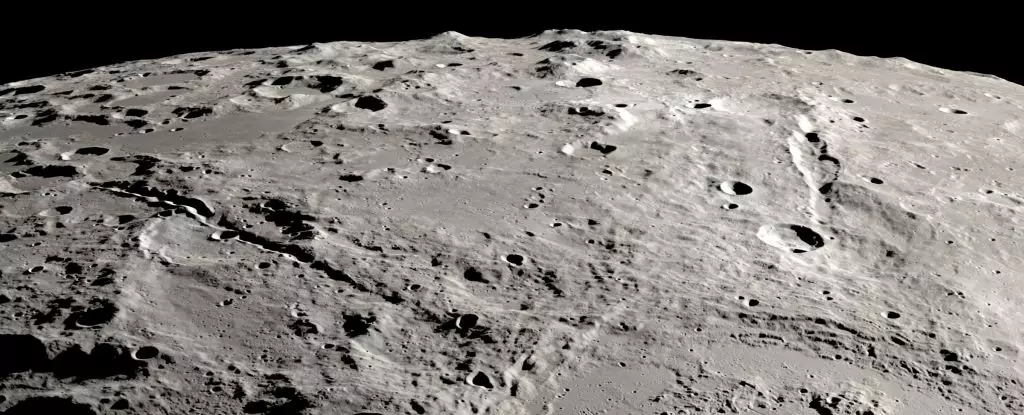The vastness of space has always captivated human imagination, especially its celestial bodies that often resemble natural wonders found on Earth. Among these, the Moon stands out for its intriguing geological formations. While Earth’s Grand Canyon is a testament to the slow, relentless erosive power of the Colorado River over eons, the lunar landscape offers a different story. With canyons like Vallis Schrödinger and Vallis Planck, the Moon reveals a past marked by violent cosmic events, challenging our understanding of geological processes beyond our planet.
Unlike the gradual erosion that shaped the Grand Canyon, the canyons on the Moon emerged from a catastrophic collision. Less than 10 minutes was all it took to create these massive structures following a monumental impact—an event that led to an extraordinary reconfiguration of the lunar terrain. Vallis Schrödinger and Vallis Planck, two gargantuan canyons extending 270 and 280 kilometers respectively, are powerful reminders of our Solar System’s tumultuous history.
The formation process of these lunar features was once shrouded in mystery largely due to the absence of liquid water, making it difficult to draw parallels between the Moon’s canyons and Earth’s. However, recent research led by planetary scientist David Kring has shed light on the origins of these formations, bringing clarity to the role of impact events in sculpting lunar landscapes.
Kring and his team undertook the ambitious task of modeling the ejecta spray generated by the Schrödinger impact. By meticulously analyzing lunar photographs, they created maps detailing how material was expelled from the impact site. Their findings revealed that this event was not a symmetrical explosion; instead, it predominantly threw ejecta towards the lunar surface’s far side, painting a vivid picture of the chaos that ensued. The speeds of the ejected material, reaching as high as 1.28 kilometers per second, emphasize the tremendous energy released during the impact—an energy level vastly surpassing that of the global nuclear arsenal.
The researchers calculated that the energy yield of this particular event amounted to around 130 times that of all the world’s nuclear weapons combined. Such monumental forces ultimately shaped the Moon’s surface, creating the distinct canyons and craters we observe today.
The discoveries unearthed by Kring’s team hold substantial ramifications for ongoing and future lunar exploration. With the upcoming Artemis III mission poised to explore the lunar far side near the south pole, researchers eagerly anticipate what lies beneath the dusty regolith. Importantly, their models indicate that the ejecta from the Schrödinger impact mostly radiated away from the planned landing sites, thus promising potential access to older geological materials. This accessibility could be invaluable in answering fundamental questions about the Moon’s history and its formation.
Scheduled for launch in 2027, the Artemis III mission will not only aim to land astronauts on the Moon but will also align with a broader objective of establishing a sustained human presence on the lunar surface. The crew’s discoveries at Vallis Schrödinger may reveal insights into the history of the Moon and, by extension, the Earth, enhancing our understanding of planetary evolution in our Solar System.
As scientists continue to analyze the findings related to Vallis Schrödinger and Vallis Planck, we stand on the brink of a new era in lunar research. These studies serve as a reminder of the dynamic and often violent nature of planetary bodies. With missions like Artemis III, the opportunity to study these ancient scars left by colossal impacts not only enriches our knowledge of the Moon but also inspires our quest to further explore the cosmos. Understanding the Moon is not just about our closest celestial neighbor; it offers crucial insights into the very processes that have shaped our entire Solar System.


Leave a Reply